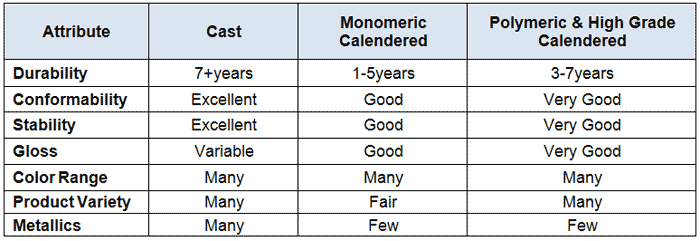The term vinyl is a common name for a print film made from PVC.
It's a popular material in the sign trade and custom sticker & label industry. Although more widely recyclable alternative, such as PP & PE, are gaining in popularity, especially for label applications.
Cast & calendered are two 'grades' of vinyl, referring to how the film is made.
Cast vinyl
Making a cast vinyl begins with a formulation (aka recipe) that's all mixed in a large bowl in a precise way.
This mixture, known as 'organosol', is then precisely metered or cast onto a moving web known as the casting sheet.
It passes through multiple ovens to evaporate the solvents leaving a solid film. This film is wound onto large rolls ready for further processing, usually adhesive coating.
Cast materials are very stable, can be very thin, which can make them extremely conformable.
Because of this, wrapping vehicles & boats are prevalent applications of cast films.
Calendered vinyl
Calendered films are also mixed and later kneaded in an extruder by huge heated rollers to form a long, thin sheet of vinyl.
The vinyl mix gets fed between two large counter-rotating rolls, heated at 350°F.
This mix gets pulled between the rolls and flattens because of the temperature & pressure, forming a 'strip'. The strip passes over multiple calender rolls getting thinner each time.
Embossing rolls apply gloss or matte 'patterns' to the film whilst it's still heated. Now that the film it's cooled and transported to be wound into large master rolls.
Calendered vinyl films range from economy to high-grade.
Using 'monomeric plasticizers' keeps the cost down for economy films, whereas higher grade films use a 'polymeric plasticizer'.
Cast vs Calendered
Here are fundamental differences between all films, for easy comparison:



Comments
0 comments
Please sign in to leave a comment.